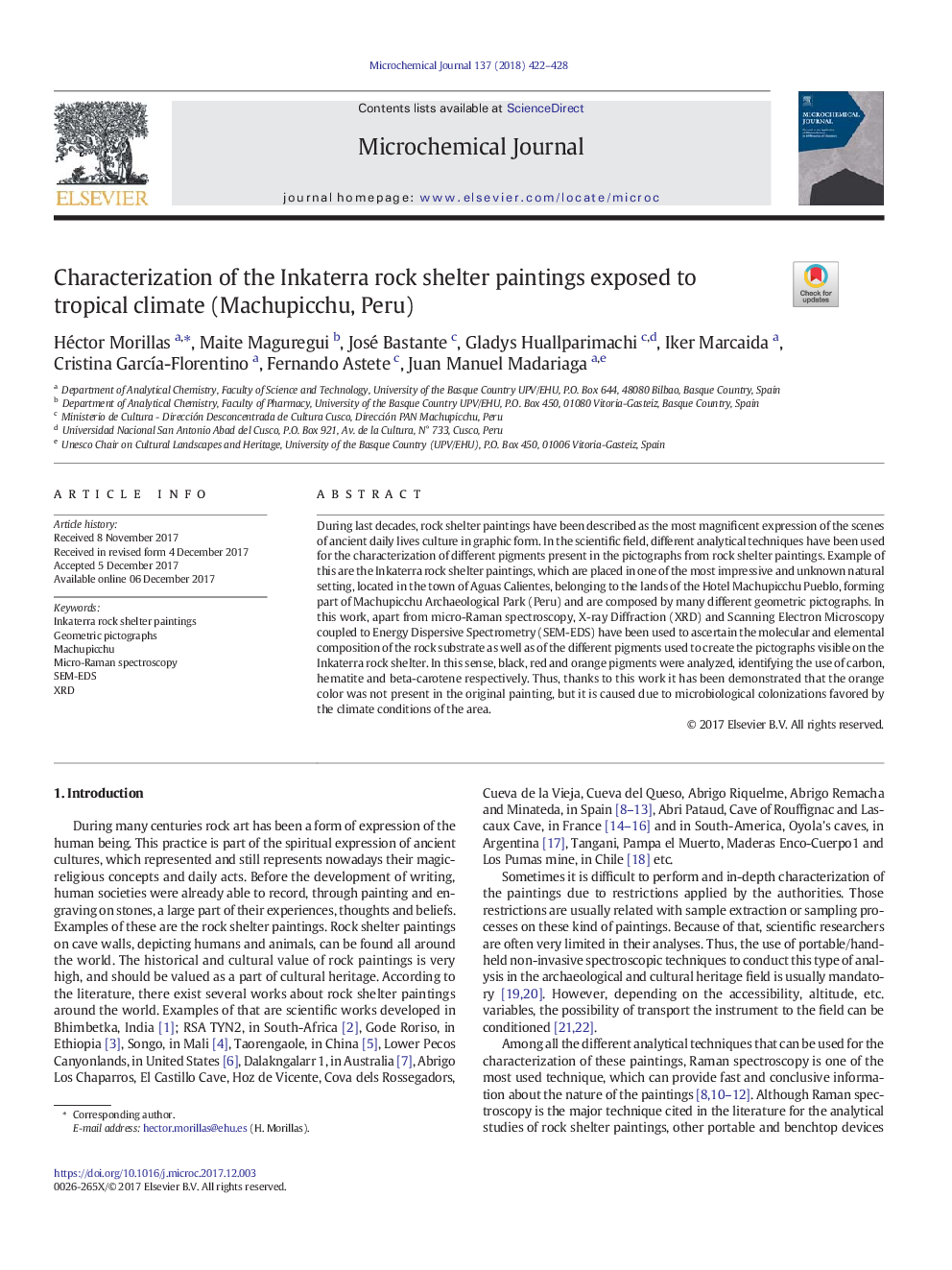| Article ID | Journal | Published Year | Pages | File Type |
|---|---|---|---|---|
| 7641029 | Microchemical Journal | 2018 | 7 Pages |
Abstract
During last decades, rock shelter paintings have been described as the most magnificent expression of the scenes of ancient daily lives culture in graphic form. In the scientific field, different analytical techniques have been used for the characterization of different pigments present in the pictographs from rock shelter paintings. Example of this are the Inkaterra rock shelter paintings, which are placed in one of the most impressive and unknown natural setting, located in the town of Aguas Calientes, belonging to the lands of the Hotel Machupicchu Pueblo, forming part of Machupicchu Archaeological Park (Peru) and are composed by many different geometric pictographs. In this work, apart from micro-Raman spectroscopy, X-ray Diffraction (XRD) and Scanning Electron Microscopy coupled to Energy Dispersive Spectrometry (SEM-EDS) have been used to ascertain the molecular and elemental composition of the rock substrate as well as of the different pigments used to create the pictographs visible on the Inkaterra rock shelter. In this sense, black, red and orange pigments were analyzed, identifying the use of carbon, hematite and beta-carotene respectively. Thus, thanks to this work it has been demonstrated that the orange color was not present in the original painting, but it is caused due to microbiological colonizations favored by the climate conditions of the area.
Keywords
Related Topics
Physical Sciences and Engineering
Chemistry
Analytical Chemistry
Authors
Héctor Morillas, Maite Maguregui, José Bastante, Gladys Huallparimachi, Iker Marcaida, Cristina GarcÃa-Florentino, Fernando Astete, Juan Manuel Madariaga,
